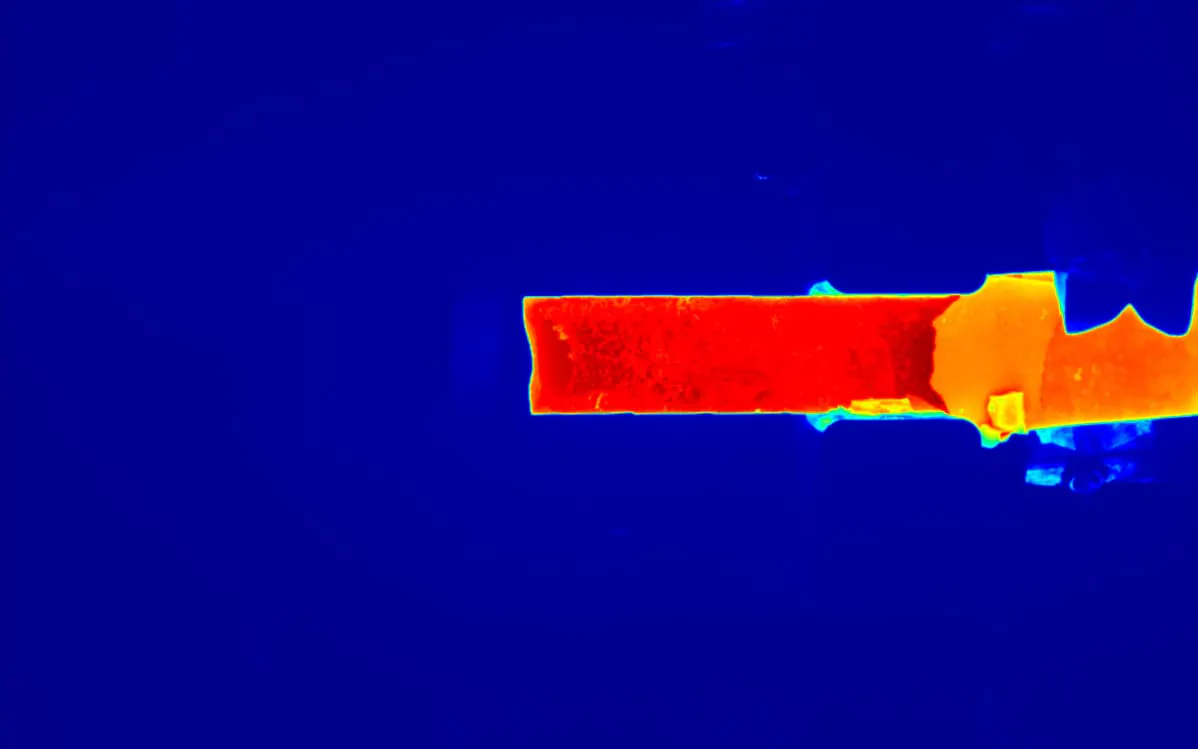
Case Study: Process Monitoring During Open‐die Forging
Anyone who wants to produce curved or twisted steel and aluminium components, can rely on bending forging nowadays. Components with complex geometries can now be manufactured by means of this incremental forging variant.
So far, however, there has been no reliable process stability at this point. The Institute of Metal Forming (IBF) at RWTH Aachen University has developed an assistance system that eliminates this weak point. The temperature measurement on the surface of the processed metals during the forging process by means of an infrared camera plays an important role here.
Historical Shortcoming Compensated
Open‐die forging encompasses a series of different forming processes. What they all have in common is the fact that the final shape of the metal workpiece, which usually has been heated to well over 1,000 °C, does not result from the shape of the tool. An often geometrically simple tool is usually moved relatively to the workpiece and reshapes the workpiece locally through repeated punches. The whole process occurs gradually, i.e. incrementally. Companies use open‐die forging to produce semi‐finished products from cast ingots. This offers the enormous advantage of specifically influencing material properties and shapes. However, thanks to the process, cavities and pores that have formed after the casting can also be closed. Much of what occurred in the production halls in the past was largely based on experience. Given the absence of backed‐up data and parameters, the results sometimes fluctuated greatly regarding the quality of the products. In total, even small, added up deviations could mean that entire components did not meet the requirements.
At the same time, open‐die forging faces requirements that are well known from many industrial processes. Energy, time and thus costs should be saved and resources used optimally. In particular, this means using the available heat as efficiently as possible, creating optimised pass schedules and reducing the heating duration. Such projects will only succeed if the process can run in a much more stable manner.
Read more about process monitoring during open‐die forging